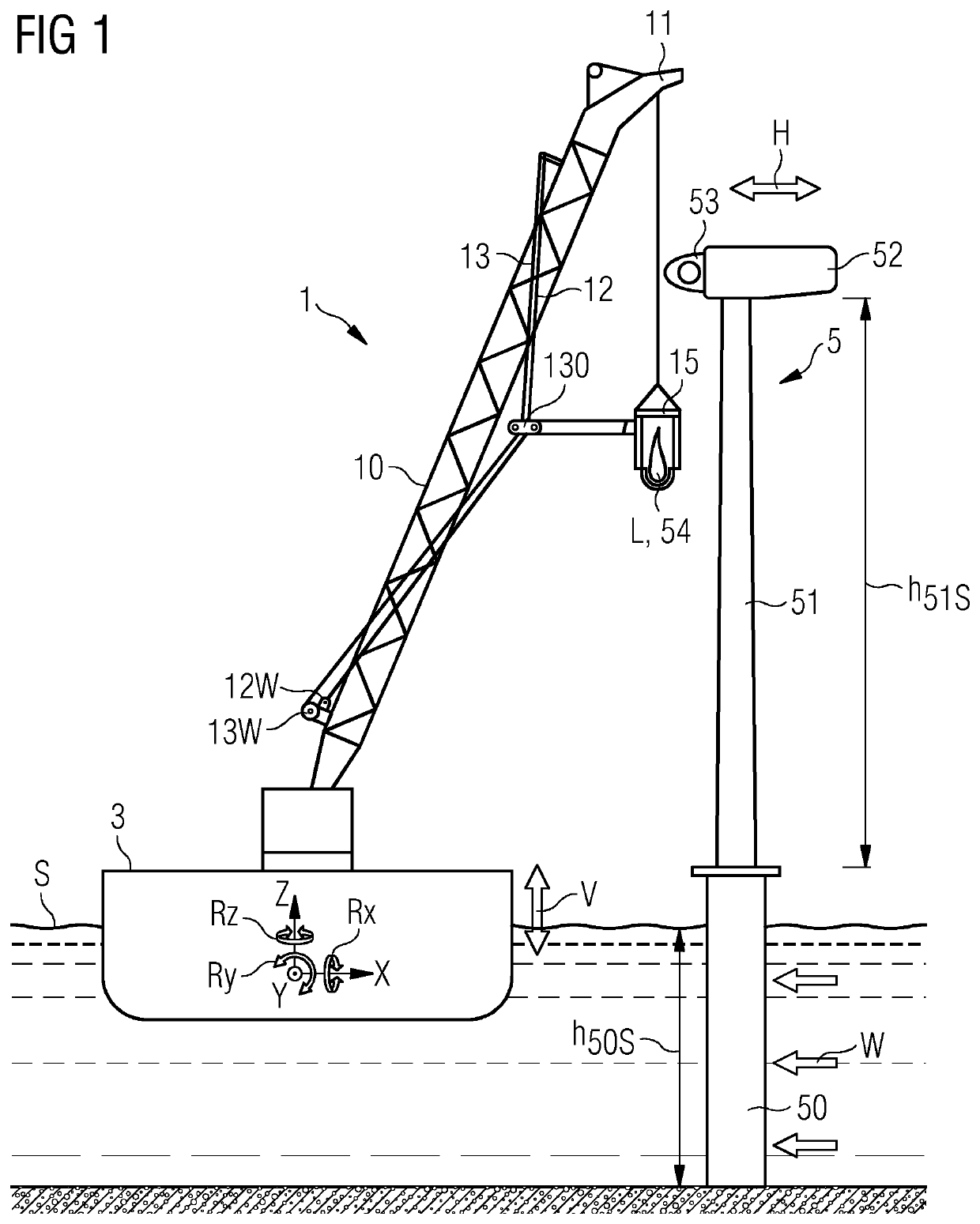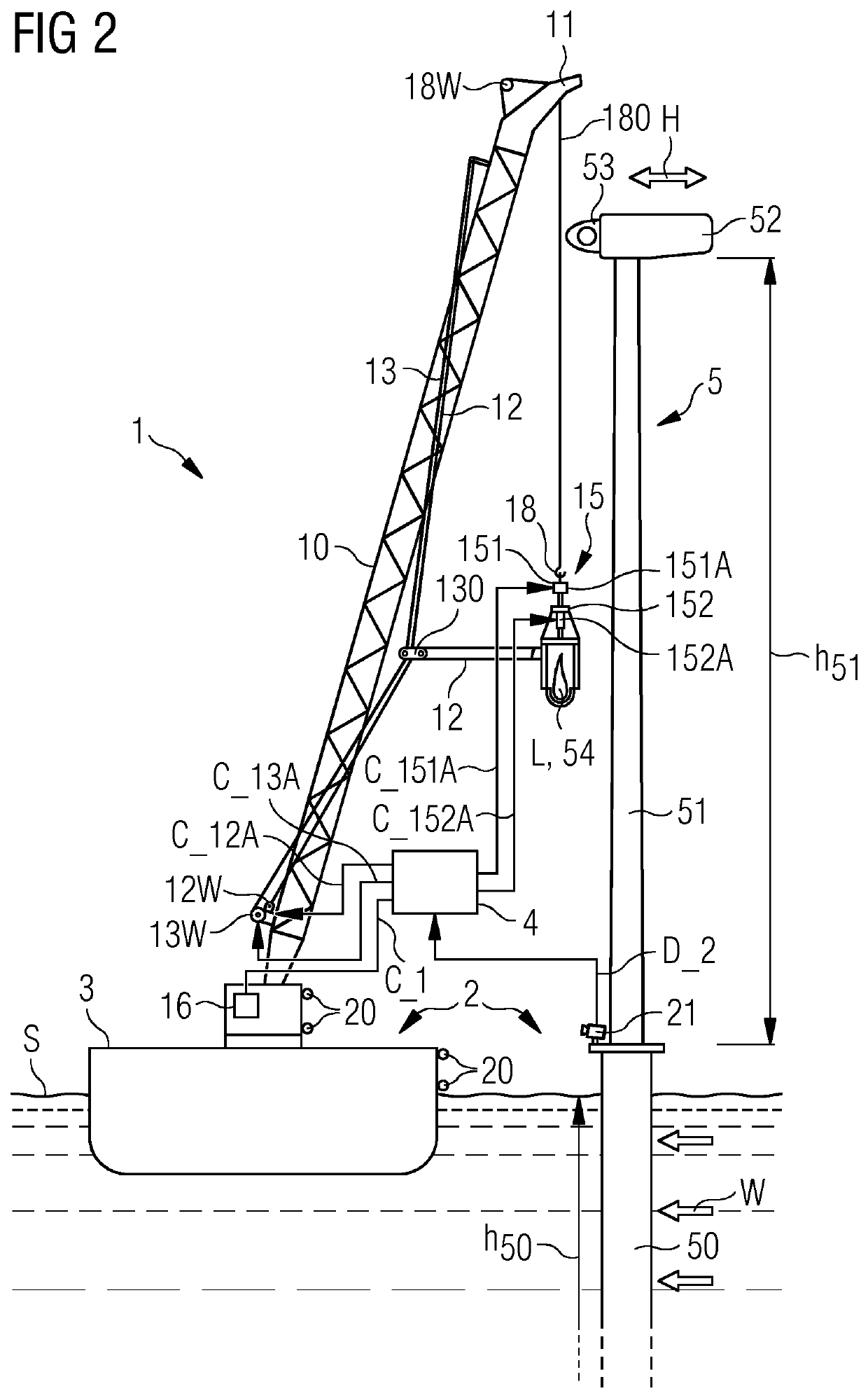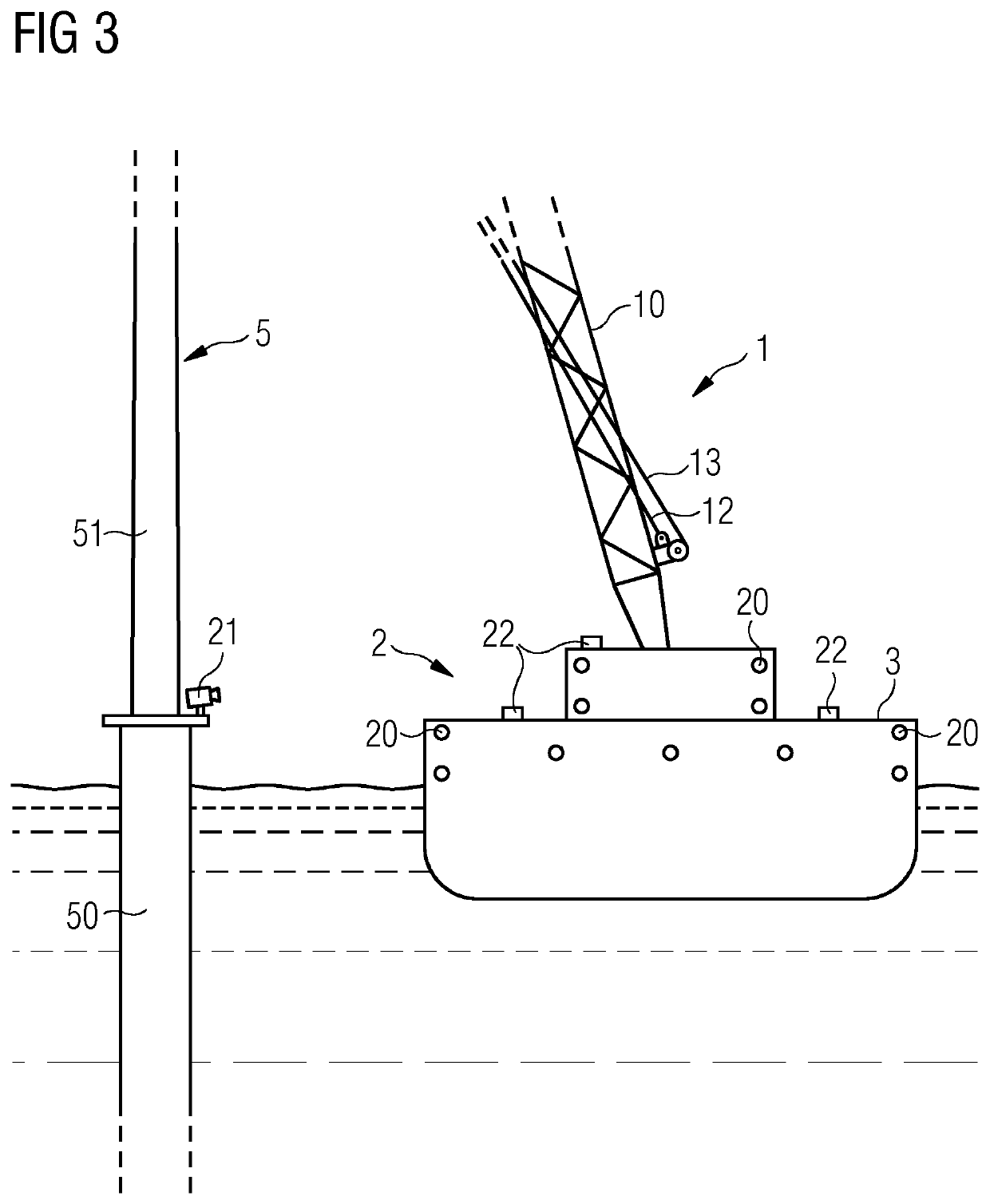Offshore wind turbine installation arrangement
a technology for wind turbines and installation arrangements, applied in the direction of wind turbine generation, hydroelectric engineering, foundation engineering, etc., can solve the problems of complex process, unwieldy components, and easy damage,
- Summary
- Abstract
- Description
- Claims
- Application Information
AI Technical Summary
Benefits of technology
Problems solved by technology
Method used
Image
Examples
Embodiment Construction
[0036]FIG. 1 shows elements of a know art installation arrangement 1, 3 during the installation of an offshore wind turbine 5. The diagram shows a floating installation vessel 3 beside the installation site. An offshore wind turbine 5 is being assembled on top of a supporting structure 50. The tower 51, nacelle 52 and hub 53 have already been assembled, and a load L in this case a rotor blade 54—is being hoisted towards a target. Here, the target is the hub 53, and the rotor blade 54 is to be connected to a blade pitch ring. Unlike a jackup vessel, which can be “anchored” to the ground by extending its legs to penetrate into the seabed to a sufficient depth, a floating installation vessel 3 cannot be prevented from moving. With respect to a three-dimensional coordinate system indicated in the diagram, the floating installation vessel 3 can exhibit rotatory motion about any of three axes X, Y, Z and can also exhibit translatory motion along any of the three axes X, Y, Z. While transl...
PUM
 Login to View More
Login to View More Abstract
Description
Claims
Application Information
 Login to View More
Login to View More - R&D
- Intellectual Property
- Life Sciences
- Materials
- Tech Scout
- Unparalleled Data Quality
- Higher Quality Content
- 60% Fewer Hallucinations
Browse by: Latest US Patents, China's latest patents, Technical Efficacy Thesaurus, Application Domain, Technology Topic, Popular Technical Reports.
© 2025 PatSnap. All rights reserved.Legal|Privacy policy|Modern Slavery Act Transparency Statement|Sitemap|About US| Contact US: help@patsnap.com



